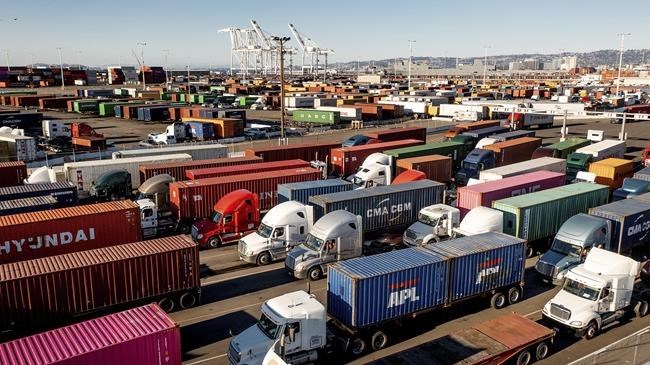WASHINGTON (AP) — The U.S. economy grew at a 2.3% rate in the third quarter, slightly better than previously thought, the Commerce Department said Wednesday. But prospects for a solid rebound going forward are being clouded by the rapid spread of the latest variant of the coronavirus.
The third and final look at the performance of the gross domestic product, the nation's total output of goods and services, was higher than last month's estimate of 2.1% growth in the third quarter.
The new-found strength came from primarily from stronger consumer spending than previously thought and businesses in rebuilding their inventories more than initial estimates revealed.
The 2.3% third quarter gain follows explosive growth that began the year as the country began to emerge from the pandemic, at least economically. Growth soared to 6.3% in the first quarter and 6.7% in the second quarter. The emergence of the delta variant in the summer was blamed for much of the third quarter slowdown.
Now with the appearance of the omicron variant, coming on top of high inflation and lingering supply chain issues, there are concerns about future growth prospects.
Those fears have sent the stock market on a turbulent ride in recent days although new optimism that the omicron risks will be manageable allowed the Dow Jones industrial average to stage a 560-point rebound on Tuesday.
But many economists believe it is far too early to declare an all-clear on the threats posed by the new variant.
“History is repeating itself with the COVID virus suddenly reappearing and dampening economic growth prospects,” said Sung Won Sohn, an economics and business professor Loyola Marymount University.
Oxford Economics has trimmed its forecast for economic growth for the current quarter from 7.8% to 7.3%, which would still represent a sizable rebound from the slowdown seen in the third quarter.
Kathy Bostjancic, chief U.S. financial economist for Oxford, said that not only COVID but also the dimming prospects for President Joe Biden’s $1.8 trillion spending plan to bolster social programs and fight climate change were causing the forecasting firm to make downward revisions to its projections.
She said Oxford’s current assessment was that the resurgence of COVID could reduce growth next year from 4.3% to 4.1% and that if Biden’s Build Back Better program is completely derailed, that could likely shave another 0.4 percentage points in 2022, lowering it to around 3.7% and chop a half-point from growth in 2023, reducing it to below 2%.
She said under these assumptions, job growth could be 750,000 lower by this time next year if economic growth slows as much as she fears.
“Omicron has been so rampant,” Bostjancic said. “We think it is going to take a pretty toll on economic activity.”
And it is not just the resurgence of COVID that could hold the economy back next year. Inflation has spiked to the highest level in nearly four decades, prompting the Federal Reserve to start pulling back the massive amounts of support it has been providing to the economy as it switches from trying to boost job growth to fighting inflation.
For this year, analysts expect GDP growth to come in around 5.5%, which would be the best showing since 1984 and a big improvement over last year when the economy shrank by 3.4%, reflecting the initial loss of 22 million jobs after the global pandemic hit and forced shutdowns in early 2020.
Martin Crutsinger, The Associated Press




